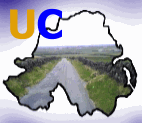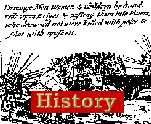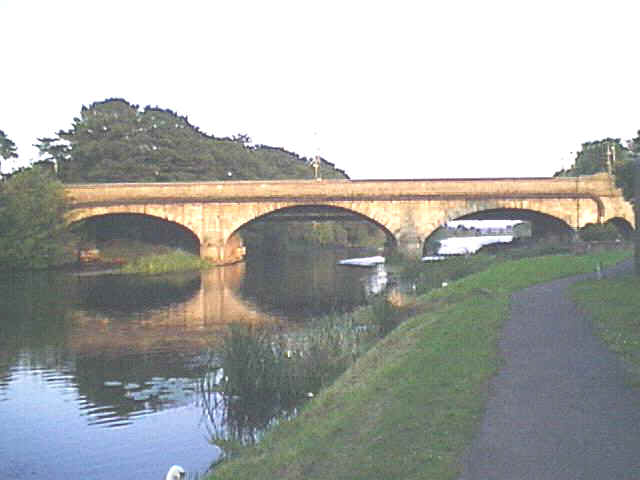|
|
|
 |
A History of Portadown Loyalists |
 |
Portadown developed in the 1600's as a crossing point on the river Bann. This was a strategic position, which was to aid in the town's development in later years. It may be interesting to question if Portadown was originally a grant in the plantation scheme, which fused settlers mainly from Scotland and England with the native Ulster people. Only c.23000 acres, or 10%, of County Armagh was distributed in this way, but given the period of the towns origins it seems likely that it was a part of this scheme. From its inception Portadown's population were predominately Protestants.
The town's history has been one marked by periods of conflict between two groupings. In the early period it appears the divisions were mainly along religious lines, while later, nationality became more significant. In 1641 Portadown and its districts were the scene of mass genocide when a sizeable proportion of its population were killed both in the town and the surrounding regions. The conflict appears to have been religiously inspired with Catholics murdering on mass their Protestant neighbours. This massacre occurred across Ulster and on a much smaller population of Protestants than exists today. Conservative estimates of those that were killed would put the numbers of dead at c.100 000 nationwide. Portadown and its districts bore the brunt of much of the violence. Many of the town's Protestants were drowned in the river Bann, where it was described how Irish Catholic armies could walk dry shod on bodies from shore to shore.

The Bann Bridge in Portadown close to where so many were killed in 1641
Loughgall, a hamlet close to Portadown, was perhaps most notable in this period of violence. Accounts describe how the residents were herded into the village church and met their deaths by dismemberment and torture. Loughgall however became more significant in the later period of the 1790's. At this time, as in 1641 and subsequent persecutions of the village residents, it was a part of wider agrarian unrest in the Portadown region. In a specific attack Catholic defender armies attempted to kill the residents of a small group of houses at the Diamond crossroads outside Loughgall. On this occasion the residents retreated but managed to return to drive back their attackers and resettle their burned out homes. Out of this incident the Orange Order was born and was intended primarily to exist in the form of a defence association. The Orange Order, now a worldwide organisation, contributed to the development of Portadown and its districts in the years following this attack. Its main impact however has been its significant contribution to the cultural and social life of the town.

Loughgall Village
In 1987 there was an interesting twist to what was continuing persecution of Loughgall and its people. In that year an IRA gang attacked the village by bombing its police station and surrounding houses. In a triumphalist gesture the attackers lined up beside their target shooting on the debris, presumably to kill the wounded that may have survived the initial blast. On this occasion the army had got wind of the IRA intentions and challenged them when they began their attack, and all of the IRA gang was killed. On few occasions did the government protect its citizens within Ulster, and often opted for political expediency at the expense of their protection. It was a great relief when action was taken at this time, however, which by coincidence saw the defence of the village mounted close to the ruins of the old church where so many had been massacred in 1641.
The violence perpetrated on communities in the Portadown area is not unique to either specific periods or places. Conflict never seems to be far away in any analysis of Portadown and its surrounding region; in the Iron Age for example, the Black pigs dyke, a 30' ditch dividing Ulster from Ireland, lay 5 miles south of the town. The ebbs and flows of subsequent Ulster borders also place Portadown's geographical position on the frontier. At the present day, border cleansing (which is addressed below) is still a problem. Perhaps more tangible is Portadown's nationalist's intolerance of their neighbours who are Protestants or members of the Orange Order. This is evidenced by Nationalists refusal to Loyalists, access to the main roads into the town, which pass areas they aggressively claim. Loyalists see this as an act of cultural apartheid and discrimination of a people for their political aspirations and their birth-right identity. It would not be true to say that the same processes had gone underway throughout history; conflict and peace at different times and in different places were often as a result of very different processes or intentions. This is not to detract however, from the distinct pattern of conflict for whatever reason that traces a thread down through the centuries.
In the 19th century it became clear that for political expediency i.e. the appeasement of Irish nationalist agitators, that Britain was working towards the disposal of Ireland, and intended that Ulster should be disposed along with it. Protection was likely a key reason for the Loyalists to prefer government by Britain, but their loyalty to this ideal is scarcely in doubt. Even when the Constitutional crisis was unsettled and a serious risk hung over their future, Ulster's youth volunteered to fight with Britain in the First World War. It was not a task they took lightly; the sacrifice of Ulster's soldiers both Catholic and Protestant in the First World War is legendary to Loyalists and thus a tangible endorsement of their pledge to the ideal of Britain. Rejection of Irish government, in tandem with the pro British stance, is manifest in the statue, which stands next to the War Memorial, of Colonel Sanderson a former Unionist Parliamentary leader. His foot rests on the Irish home rule bill, which was the blueprint of Ulster's disposal. He was reported to have said that "the home rule bill may pass the House of Commons, but it will never pass the Bann bridge in Portadown". This may be also seen, as a proviso of loyalty to Britain, in that Loyalists would not accept the sovereignty of Parliament as a licence to treat the Ulster people as it would wish. The Ulster people expected then in return for their loyalty a paternalistic responsibility from London to govern them as they would any other part of the United Kingdom. In essence, if Britain was to carry out its aims of disposing of the Ulster people and constructing a state wherein they would be a minority and effectively under control of the Southern Irish, then they reserved the right to resist. In the event Ulster was given its own government separate from Ireland and remaining within Britain, the new Ulster, now called Northern Ireland, consisted of six counties of the nine, which had made up late medieval Ulster.
Economically, through the years, Portadown has stood at an opportune crossroads and gained prosperity from transport links that bisected the town. The Newry canal for example linked Portadown with the Irish Sea in 1742; in the 19th century it became a significant railway junction and in the 1960's was linked by motorway to Belfast. Perhaps the greatest developments and resultant demographic changes came in the expanding years of the 1960's. Grand plans were made to design a second city for the province in which Portadown and nearby Lurgan were to form the periphery. This new urban outreach planned to integrate both Catholics and Protestants and much effort was exerted in bringing new industry to the area. This likely had the effect of transforming Portadown from the focus of an agricultural area to an industrial centre with an expanded working class. Craigavon is now widely regarded as a failure not least because integration between Catholics and Protestants did not succeed. It did however bring a larger Catholic population, which was significant in later developments of the 1980's and 90's.
For a time it appears relations between nationalists and unionists were amicable, which may be a reflection of prosperity. In the 1960's and 70's for example Portadown appears relatively peaceful when viewed beside trouble spots such as Belfast or Londonderry; this however, was not the case in the post 1985 period. It would be inaccurate to say however that Portadown was divorced from the wider conflict; paramilitaries from the area and from both sides of the divide were responsible for some of the more prominent actions, both in the Irish republic and elsewhere in Ulster. It is also during this period that the town was divided more clearly demographically between unionist and nationalist.
In 1985 the London government, which was then controlling Ulster directly, signed an agreement with the Irish government, which allowed the Irish government a role in Ulster's government. Loyalist reaction to the Anglo Irish agreement was one of widespread revulsion. It had marked for them a new era of relations with London, and anger that their wishes had been betrayed in what amounted to a backroom deal without their consent. Reaction against the agreement was likely sharper in Portadown because of its frontier position. A reoccurring theme in the area in the 1980's and 90's was Loyalists perception that they were victims of systematic border cleansing. In border areas and in particular the areas south of Portadown, the methodical murder of Loyalists coupled with economic boycotts and intimidation, were driving Loyalists from homes, which, in many cases they had occupied for centuries. Much of the intimidation went, and still goes, unrecorded, while in the context of wider conflict methodical murder appeared little out of place. Attention that is paid to aspects of this kind of activity is usually based on observable actions i.e. the tangible violence, but little attention is paid to the purposefully psychological damage and apparently non political actions, which could hinder; earning power, and thus survival, education, or, creativity. Such side effects of this deliberate action are also important, not least because of the underlying fear, the splitting of communities, and the isolation of families, which such systematic and propaganda sensitive, measured violence precipitates. Cleansing in such a manner is very different from other aspects of the conflict between groups in Ulster; it is not, for example, for political aims or even pure frustration. It is deliberate, systematic, pre planned, and carried out over a long period with apparent disregard for any political climate. It takes any form, which will achieve the eventual expulsion of the Protestant community, and is carried out regardless of age or gender. It is not then defence or even political attack; it is the methodical removal of large tracts of population simply on the basis of identity.
It is difficult to measure or collate evidence on phenomenon, which has effects that are wider than its actions. Perhaps the best evidence is the large population shifts of Loyalists from villages in south Armagh, which are putting pressure on the towns and villages surrounding Portadown. This has been happening over a number of years, but is such that the population pressure is creating problems for local government. Whatever the practical effects, to Loyalists this is a much wider issue than the personal tragedy that it is. Loyalists see border cleansing as part of a wider attack on their culture and people, the practical policy of the "Brits out" slogans, which are frequently hurled at them.